Types Of Car Accidents
With all the different types of car accidents, the vast majority of auto accidents that occur here in the U.S. are caused by driver error. The statistics from the National Highway Traffic Safety Administration (NHTSA) estimate that 94% of all motor vehicle crashes can be attributed to mistakes made while operating a vehicle. This could include anything from an incorrect turn to distracted driving, but it’s important to remember that vehicle malfunction and bad weather conditions can also contribute to these types of car accidents. Even so, understanding what types of accidents are actually most common can help us better protect ourselves while on the road.
Unfortunately, car accidents happen in a variety of ways, and each type of accident leads to unique car accident claims. From rear-end accidents to T-bone collisions, the top 8 common types of car accidents seen below cause countless injuries and fatalities every year and often require compensation for medical bills or lost wages.
Knowing what to look out for in different types of car accidents and understanding the legal implications will help you protect your rights in the event that you are involved in an auto accident.
Common Types of Car Accidents
Car accidents come in all shapes and sizes and no two accidents are exactly the same. However, many times they involve similar types of circumstances. At our law firm, we have handled many different types of car accidents, including:
Rear-End Car Accidents
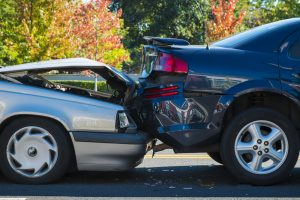
Rear-end collisions are one of the most common types of car accidents, usually caused by drivers not keeping a safe distance between them and the vehicle in front of them. Other contributing factors include being too tired or under the influence to drive safely, or being distracted and not paying attention to the road. These accidents can be prevented by making sure you keep your focus on the road and maintain enough space between yourself and the car in front.
While rear-end crashes are usually caused by the rear driver following too closely, they are not always entirely at fault. The driver in the front may be to blame if they stopped abruptly in a lane of active traffic or reversed without an obvious cause.
Rear-end accidents often result in serious injury. A victim of this type of car accident can experience broken bones, whiplash, neck strain and severe spinal cord damage—even at low speeds. Knowing how to prevent or respond to a rear-end collision can reduce the likelihood of serious injury.
Head-On Collisions
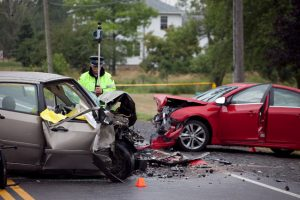
A Head-on collision is one of the most dangerous types of car accidents, though less frequent than other types involving vehicles. As cars approach one another the force is heightened.
As such, the likelihood of serious injury to a driver is higher in head-on collisions.
Some common causes of head-on collisions are distracted driving impairment, fatigued vehicles driving fast, or dangerous vehicles. The injury caused by the accident can be very serious and may involve traumatic neurological injuries, spinal injuries, internal organ damage, broken bones and more.
T-Bone Car Accidents
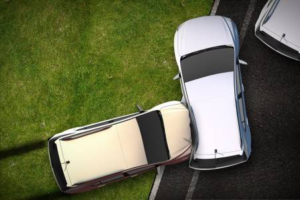
T-Bone car accidents are often known as side-impact collisions. The collision is due to the shapes they are formed in. These crashes are sometimes called broadside incidents. A T-bone accident occurs in a vehicle where a car's front end hits the side.
While airbag protection is available to the drivers who have been injured in a car accident, no such protection is offered for the driver of the car hit by the side. T-Bone accidents often results in severe injuries or deaths. In 2017, collision deaths were 25 percent of traffic deaths and 26 percent of fatalities from parked cars.
SideSwipe Accidents
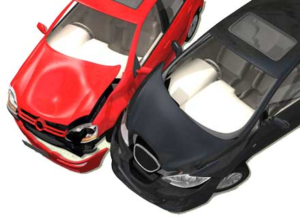
Sideswipe accidents occur in situations where multiple vehicles traveling in the same direction along parallel paths. Drivers that ignore their blind spots when merging or switching lanes may cause accidents. Sideswipe accidents are dangerous as they are caused by the initial impact which causes one vehicle to lose control or the other vehicle to slide off the roadway or into another lane.
This action can then cause that one vehicle to hit others, including cars and cyclists, in roadside or pedestrian areas. In accidents involving sideswiping, serious injuries are usually experienced - particularly after the secondary collision.
Rollover Accidents

Rollover accidents can have devastating consequences and can occur in a variety of situations. Such crashes may cause serious injuries, (like traumatic brain injuries or spinal cord injuries) to passengers on board, or even lead to vehicle fires if fuel or cargo ignite resulting in further injury or fatality.
The tremendous force of the vehicle being flipped may also lead to occupants being ejected, making the impact and resulting injuries even more catastrophic. Common causes of a rollover accident include speeding, distracted driving, impaired driving, fatigue while driving, driving off the shoulder and other vehicles/objects forcing cars off the road.
Merging Accidents
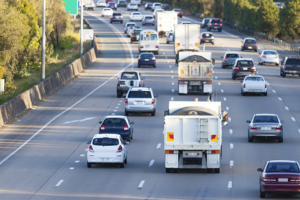
Merging accidents occur when drivers attempt to join a lane of traffic, but don't take the right precautions. If a driver fails to check their blind spot, mismatches the speed of the vehicles around them, or drives in a careless manner, an accident can result. Experienced drivers know this and take extra caution while merging to avoid these types of car accidents.
In some cases, merging accidents can occur when one driver increases their speed to beat another car trying to join the highway. These occurrences take place at a high velocity, meaning that any occupants involved risk serious harm and trauma.
Left-Turn Accidents
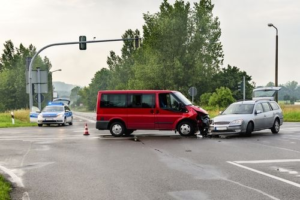
Left turn accidents are common at intersections, stop signs, and side streets. The driver making the left turn generally has the right of way only if they have a green left arrow signal. In other cases, they must yield to oncoming traffic that is driving straight through the intersection or pedestrians in crosswalks.
At a stop sign, they must yield right-of-way to motorists on their right as well as approaching traffic when turning left onto a street to avoid an intersection accident. Sadly, bicyclists, motorcyclists and pedestrians can become victims of these types of collisions and can suffer life-altering injuries or even death. In many instances, the motorist turning left is liable for any compensation due to those injured by their actions.
Lane Change Accidents

Lane change accidents can be caused by a variety of factors, from drivers not checking their blind spots while driving at high speeds. These types of car accidents are responsible for a large share of motor vehicle collisions in the United States and become more dangerous as the speed of the vehicles involved increases.
To minimize the chances of getting into an accident when changing lanes on Florida roads or highways, motorists should take time to properly assess whether it is safe to switch lanes before doing so. All too often, those who have been involved in a lane change accident will recall that they took no precautionary measures.
How Our Miami Car Accident Lawyer Can Help !
If you’ve been injured in one of the types of car accidents above, you need an experienced car accident lawyer to represent your interests and fight for the compensation you deserve. At Beharry Law, we serve victims of all types of car accidents throughout South Florida.
No matter which types of car accidents above you were involved in, we can investigate who was responsible for your damages, identify all insurance policies that may provide coverage, and calculate your losses due to the accident. Once we have gathered sufficient evidence to support your claim, our attorneys will negotiate with the appropriate insurance companies for a fair settlement. If necessary, we'll even take your case to court on your behalf.
Click the button below to schedule a free consultation and learn more about how we can help you get justice.
